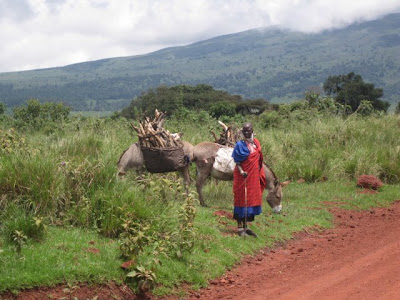Serengeti NP encompasses more than 14,000 square km, and it borders Masai Mara National Reserve in Kenya and the Ngorongoro Conservation Area in Tanzania, allowing animals to roam freely between the parks. Maasai tribesmen live within the conservation area only, herding their animals amidst the resident wildlife.
Ngorongoro Crater is a 20km wide caldera (collapsed volcano) within the conservation area, on the edge of the Great Rift Valley. The crater itself houses a huge concentration of wildlife, including lions, elephants, buffalo, wildebeest, zebras, rhinos and even flamingos (in Lake Magadi, the soda lake at the base of the crater).
The conservation area also includes Olduvai Gorge - a 50km long and 90m deep canyon with two million years of layered volcanic deposits that provide evidence of ancient life. Important anthropological finds in the conservation area include "Nutcracker Man" (a 1.8 million year old Australopithecus boisei skeleton discovered by Mary Leakey in 1959), and the 3.7 million year old Laetoli hominid footprints, discovered in 1972.
 An adult and baby zebra in the foreground, with wildebeest behind
An adult and baby zebra in the foreground, with wildebeest behind An adult and baby giraffe walk through fields of wildflowers
An adult and baby giraffe walk through fields of wildflowers An adult and baby wildebeest in the Ngorongoro Conservation Area
An adult and baby wildebeest in the Ngorongoro Conservation Area A typical roadside view in the Ngorongoro Conservation Area (often the wildebeest and zebra took over the road as well!)
A typical roadside view in the Ngorongoro Conservation Area (often the wildebeest and zebra took over the road as well!) A Maasai woman waits with her donkeys
A Maasai woman waits with her donkeys




No comments:
Post a Comment